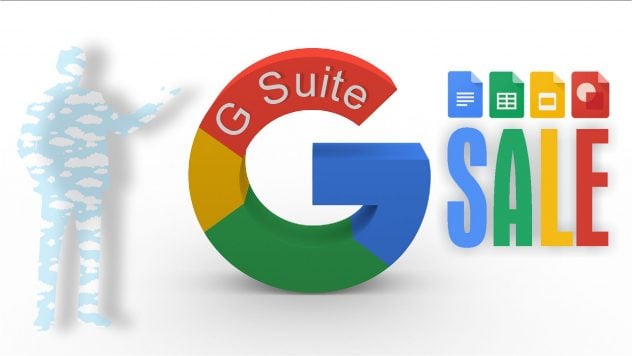Everyone's doing it
It seems that everyone on the internet has an opinion about online meeting software, and there are so many recommendations that they will probably leave you wondering which one is really the best to use.
My recent journey through the maze of meeting software has shown me that definitely not all meeting software is the same, with some surprising results; big names can mean big prices, and there are unknown gems that do exist.
Without commission or favour, I share my opinion about online meeting software and tell you what I found…
Let's meet...online
Since the COVID-19 emergency lockdown, many businesses and individuals have been trying online meeting software to stay connected with their colleagues, family and friends. That’s simply because it is the next best thing to being there.
I have been providing technical support to my local non-profit community gardens since the beginning of 2020, mainly with administrative and website maintenance work. Since the advent of the COVID-19 emergency, they had to find a solution to continue their committee meetings.
The community gardens couldn’t be abandoned and important decisions had to be made for it to continue to function. There were now urgent responses needed and many important issues had to be addressed. We needed an online meeting platform that everyone could use, regardless of the type of device or operating system, or limited technical understanding.
The criteria we were looking for was:
- The ability to have up to 10 members in a meeting.
- Be easy to set up a meeting and invite others, using any email address.
- Must be easy for invitees to join a meeting – with a choice of methods.
- Be independent of needing a subscription or requiring an account for invitees.
- Easy to use meeting interface.
- Ability to record the meeting – for now, and into the future when the corona crisis is over.
- Screen and file sharing – we needed a platform that enabled everyone to share their screen, a window, or a file with others.
- Must be FREE – a small non-profit organisation can’t afford a subscription, especially with these platforms being exclusively based in the USA, the cost of subscription in Australian dollars is prohibitive.
Testing in the field
Microsoft Teams
I ruled out Microsoft Teams as it was too technical for the committee members and required a MS Office 365 Business subscription to host a meeting. Though, it should be said that it is a powerful tool for the larger business that is set up on the Microsoft system using Office 365. With it being such a comprehensive meeting tool, it would have a steeper learning than other meeting programs.
Zoom
I ruled out Zoom. For some time I’ve had reservations about this platform’s security and my suspicions were proved correct when it was subsequently found that the meetings were being hijacked by uninvited attendees. Zoom also failed to have end-to-end encryption to protect user’s privacy. They are now banned for use by a host of companies around the world and there has been a few investigations launched into Zoom’s breaches of privacy.

WhatsApp / Facebook
I ruled out Whatsapp and Facebook Messenger fairly quickly as not everyone has an account with them, or they don’t want to create one due to lack of confidence in their privacy being protected when using Facebook (who also own WhatsApp). Besides, with limits on how many members can be in a meeting and the lack of a screen sharing function, it wouldn’t work for most organisation’s purposes.

Google Hangouts Meet
We started with Google Hangouts, but the interface was too confusing for some users and required everyone to have a Google account. So then we tried Google Meet using my G Suite account, but it was limited in features and it would have to be started from my paid Google account.
Then Google, being Google, decided some confusion was due and belatedly merged Google Hangouts into Google Meet, mid-corona crisis. Now, Google announces that anyone can use Google Meet, but it is only for a limited time to September 2020. Those who do want to use it for this grace period can enjoy all the features that would normally be available only to G Suite Enterprise users. While Meet provides great quality in the connection, it still lacks some features that we needed. The design of the chat window isn’t an intuitive one, with some settings hidden off the main screen in the settings menu. For example, this means having to go into settings to change from focus view to grid view. Almost all the other meeting platforms have the view toggle settings on the meeting window. Another issue for the presenter who is screen sharing, they cannot see what they are showing others with only a notice on the screen indicating that they are sharing.
We had another try with Google Meet, but the quality of the connection degraded for most users and they lost their camera function, so we had to abandon the meeting.
It’s not that I have anything against Google, I think it is a great system of integrated apps, and an inexpensive office solution. It’s just that I think their meeting app needs some more development to make it more functional and user friendly.
8×8 Meet
We tried 8×8, and while being feature rich with a great user interface and the ability to record meetings, it seems the quality of the meeting was not dependable. Sound issues and video quality degraded quickly, causing the meeting to be abandoned. 8×8 is free to use, but if you want to record your meeting you will need to subscribe: starting at USD$16 month – that’s expensive just to record a meeting. Not having tried 8×8 paid version, I can’t report what difference there is in quality to the free version.
Jitsi
We then tried Jitsi. This is open source software, supported by volunteer coders. It also happens to be identical to 8×8. Why? I guess that 8×8 are using it and adding some extra capability to improve the quality, which you pay for. If you are going to use the free 8×8 software, you may as well use Jitsi as it includes exactly the same features for free that you get with 8×8’s paid version. Sadly, though it was great to use, it suffered from video and audio degrading as time passed. Like some others we tried, we had to abandon our meeting with this too.
Finding the meeting gem
 I had nearly given up finding an online meeting platform that had most features with good quality. Then, quite by accident I found FreeConferenceCall while mining through reviews. After so much trialling and research, I found it difficult to believe I might have stumbled on to the holy grail of meeting apps. It was overwhelming. There must be a catch I thought.
I had nearly given up finding an online meeting platform that had most features with good quality. Then, quite by accident I found FreeConferenceCall while mining through reviews. After so much trialling and research, I found it difficult to believe I might have stumbled on to the holy grail of meeting apps. It was overwhelming. There must be a catch I thought.
Can’t find a catch.
I’m impressed.
It is fully featured and free.
They do offer a range of suggested paid subscriptions, but it seems to be more of a request to support them with an ongoing donation. For what it’s worth, if I used it often, I would certainly support them with a subscription to keep the platform going. I am seriously considering using this more often for meeting our clients.
To get started as a meeting host or to join a meeting you will need to create an account with FreeConferenceCall using your email address or your Facebook account. It takes only a moment to get started.
Once your account is created you will be taken to the FreeConferenceCall dashboard. You can set up your professional profile like a business card, with your photo, your company logo, your name, location and phone number. This will be the identity of your meeting “wall”, where your customers/invitees can go to access password protected sections containing calendar, files and information associated with your meeting. This is a feature you usually only see with expensive corporate meeting software.
Invitations are sent by email from FreeConferenceCall or by copying meeting room details provided.
FreeConferenceCall provides you with their own calendar app to schedule your meetings instead of interfacing with Outlook Calendar or Google Calendar, which for me was no problem to use.
Meetings can be recorded with FreeConferenceCall providing free users 1Gb of cloud storage – enough for about 2 hours of recording. You can buy extra storage, or subscribe to get more. The storage can also be used for files, similar to how Dropbox works.
Watch the video introduction to learn how FreeConferenceCall works:
Go to FreeConferenceCall.com to find out more.







